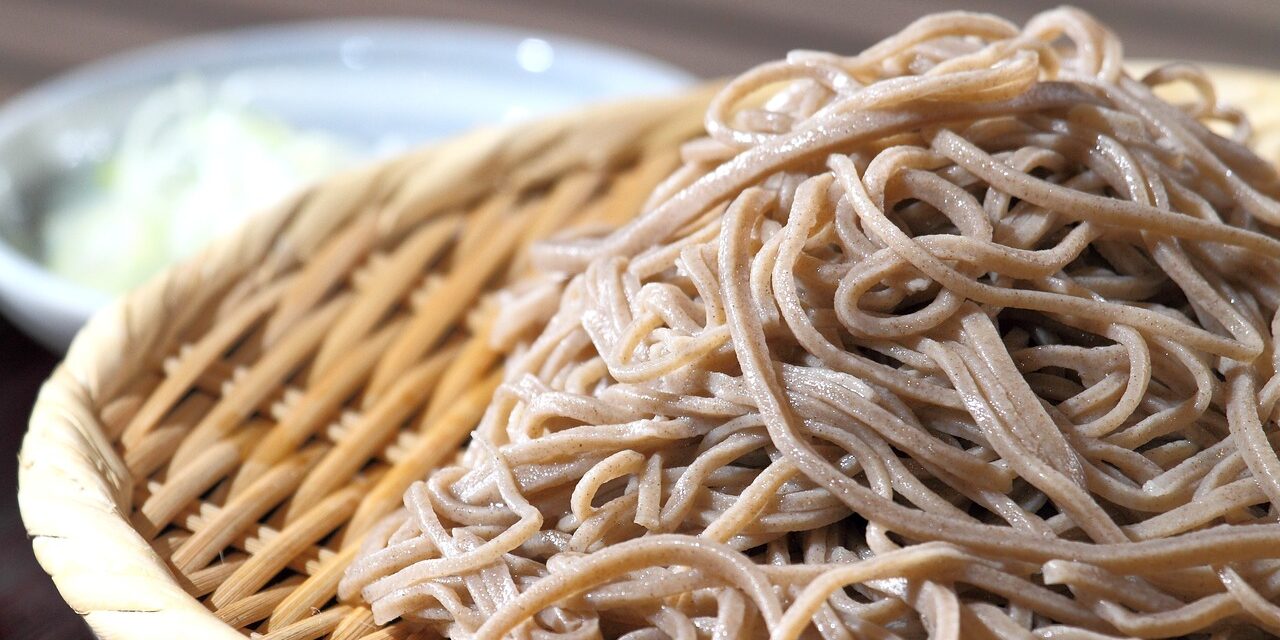Soba noodles, a traditional Japanese staple, have captivated the palates of gourmands and casual diners alike with their delicate texture and nutty flavor. Made primarily from buckwheat flour, these noodles possess a rich history intertwined with cultural significance and culinary adaptation that spans centuries.
The origins of soba can be traced back to the 8th century, during the Nara period (710-794). Historical records suggest that buckwheat, the key ingredient in soba noodles, was introduced to Japan from the Asian mainland. Buckwheat, known for its hardiness and ability to flourish in poor soil conditions, became an essential crop in the mountainous regions of Japan, particularly in Nagano and Yamagata prefectures. The widespread cultivation of buckwheat facilitated the transformation of the grain into a popular form of nourishment, primarily due to its high nutritional value compared to other grains.
During the Kamakura period (1185-1333), soba began to take on its modern shape and characteristics. Shinano Province (present-day Nagano) became one of the epicenters for soba production, where the combination of nutritious buckwheat and local culinary practices led to the emergence of soba noodles as a distinct food item. The first known soba restaurant, called “soba-ya,” originated in Edo (modern-day Tokyo) during the Edo period (1603-1868). This historical development coincided with a burgeoning urban population, particularly among the merchant class, which favored soba as a cheap, accessible, and nutritious meal option. It is worth noting that soba was not merely a culinary delight but also a symbol of social status, as the consumption of soba noodles became a defining feature of the Edo culture.
One of the remarkable aspects of soba noodles is their classification based on buckwheat content. The most common types include “juwari soba,” made with 100% buckwheat flour, and “ni-hachi soba,” which comprises 80% buckwheat and 20% wheat flour. The former is cherished for its distinctly rich flavor and chewy texture, while the latter tends to be more elastic and easier to manufacture. Industry estimates suggest that while every region of Japan produces its own varieties of soba, the annual production of buckwheat flour had been approximately 15,000 tons as of 2020, indicating a robust market for this revered ingredient.
The versatility of soba noodles has led to their incorporation into various dishes, ranging from hot to cold preparations. Traditional serving methods include “zaru soba,” where chilled noodles are accompanied by a dipping sauce, and “kake soba,” where the noodles are served in a hot broth. Notably, the culinary adaptation of soba transcends geographical boundaries; in recent decades, soba has found a place in the global culinary scene, with chefs experimenting with unique fusions that highlight its intrinsic qualities.
Soba noodles are not just celebrated for their flavor; they are also lauded for their health benefits. As a whole grain, buckwheat is gluten-free and boasts an impressive nutrient profile, containing essential amino acids, vitamins, and minerals. The presence of rutin, a flavonoid with antioxidant properties, has been linked to enhanced heart health and improved circulation. These health advantages, combined with the increasing global trend toward plant-based diets, have further popularized soba in culinary circles beyond Japan.
However, the soba industry has faced challenges over the years, particularly with declining buckwheat cultivation due to younger generations moving away from agriculture. To address this predicament, initiatives have been launched to revitalize buckwheat farming through community engagement and sustainable practices. Local governments have also begun to promote buckwheat festivals, highlighting soba’s cultural heritage and introducing tourists to the local variations and flavors of this beloved culinary staple.
In conclusion, soba noodles represent a rich tapestry of history, culture, and nutrition deeply embedded in Japanese society. From their origins as a simple food source cultivated in the rugged terrains of Japan to their current status as a globally acknowledged delicacy, soba’s narrative continues to evolve. As we savor this timeless dish, we are reminded of the age-old traditions that have shaped our dining experiences while embracing the innovations that challenge and expand its culinary boundaries. Thus, soba noodles serve not only as nourishment but also as a bridge connecting past practices with modern palates, ensuring their place on tables worldwide.

